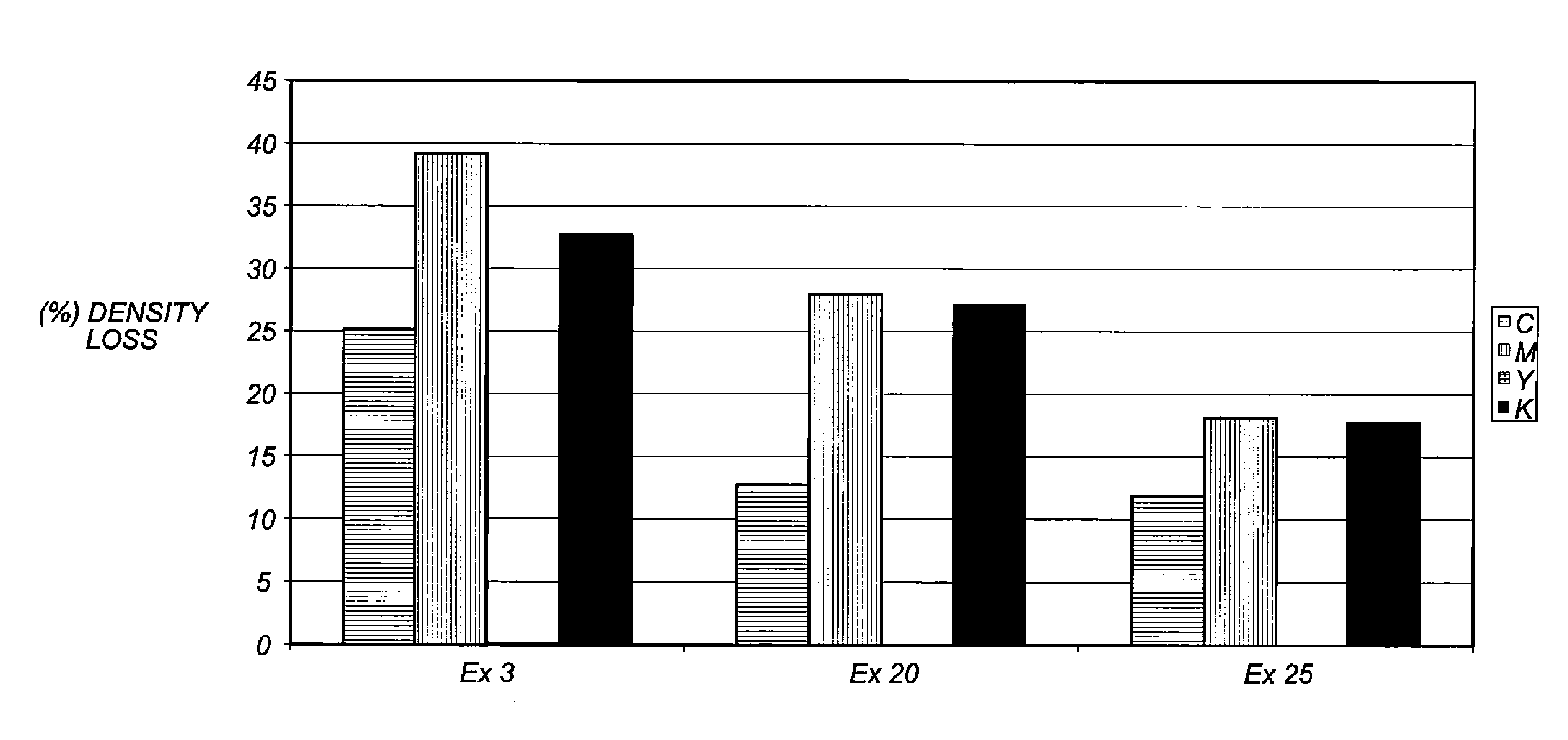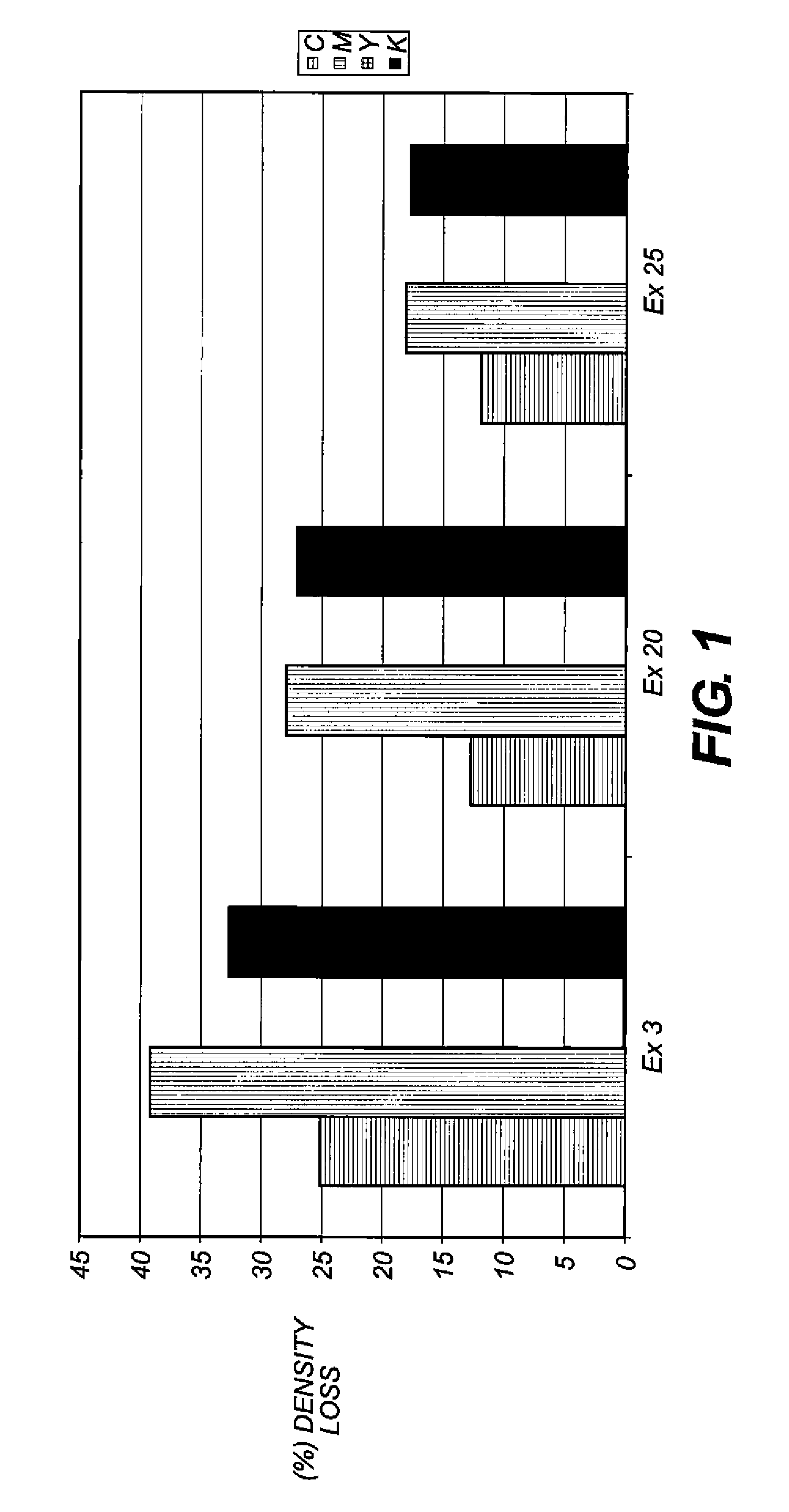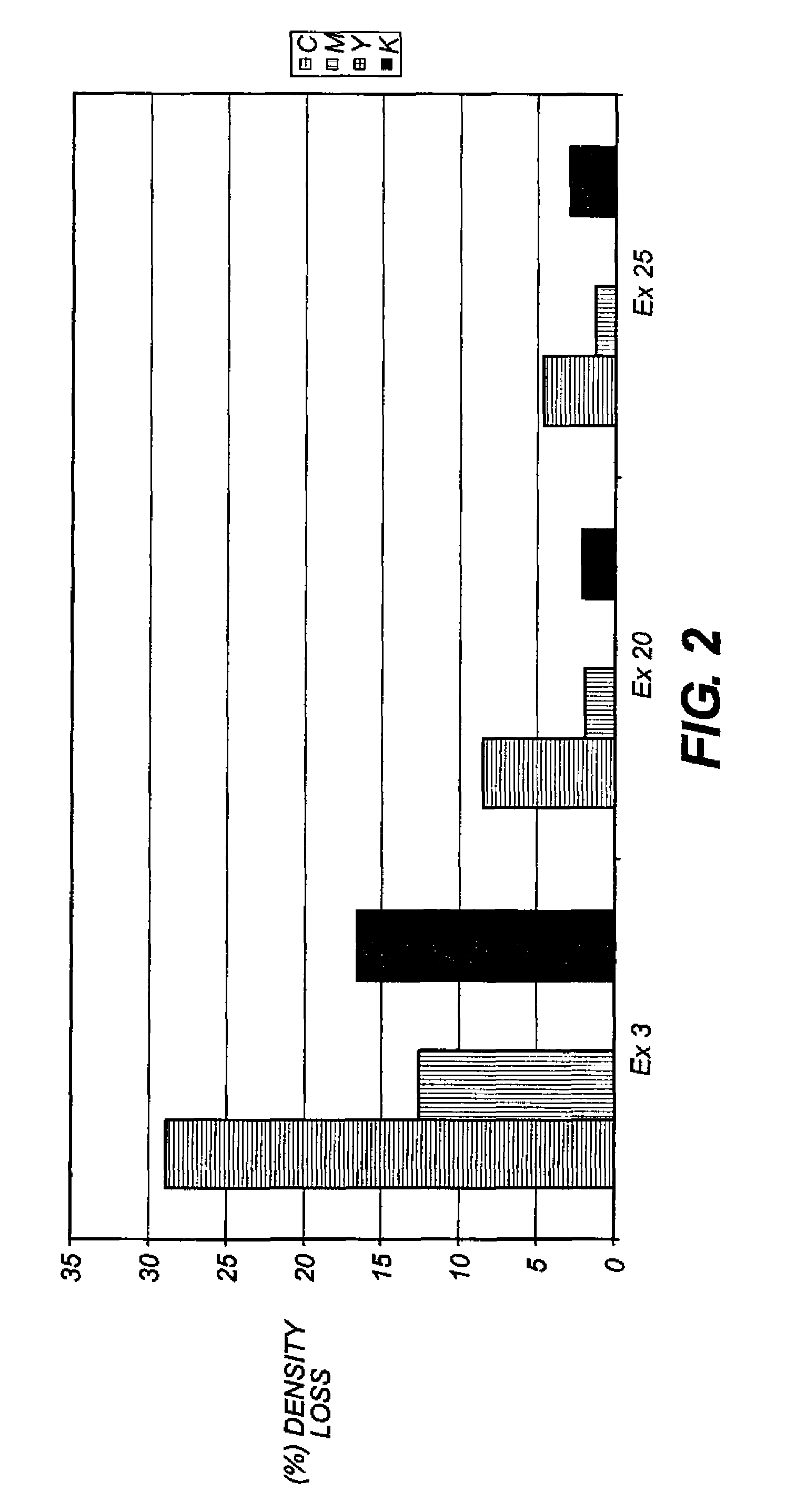Material for forming images by inkjet printing
a technology of inkjet printing and printing paper, which is applied in the direction of printing, coating, thermal imaging, etc., can solve the problems of poor image stability in time, loss of color density, and inability to supply good proofs if inferior quality printing paper is used, and achieve good image colorfastness over time, good stability of printed image colors, and high drying speed
- Summary
- Abstract
- Description
- Claims
- Application Information
AI Technical Summary
Benefits of technology
Problems solved by technology
Method used
Image
Examples
examples
The following examples illustrate the present invention without however limiting its scope.
1) Preparing Compositions Intended to be Coated on a Support to Constitute an Ink-receiving Layer
Unless otherwise stated, all the percentages given are by weight.
Composition 1:
The inorganic particle used was an alumina Pural® 200 (boehmite) marketed by SASOL, having a specific surface of 110 m2 / g. Polyvinyl alcohol (PVA) Gohsenol GH23 marketed by Nippon Goshei in 9% solution was used as binder. Zonyl® FSN marketed by Dupont™ in 40% aqueous solution was used as surfactant.
Composition 1 contained:
Deionized water=24.2 g
Pural® 200=40 g
PVA GH23=33.3 g
Zonyl®FSN=2.5 g
Composition 1 contained 40% particle, 3% PVA.
The mixture of the inorganic particle with the PVA was stirred vigorously and heated to 60° C. This composition 1, having a very high quantity of inorganic particles, formed a gel as it cooled to ambient temperature (25° C.).
Composition 2:
Composition 1 was repeated but only using 33% of inorga...
example 3
with the hardeners gives light setting, but Example 4, giving bad coating, shows that the hardeners cannot be kept.
examples 5 to 9
show that when carrageenan is used alone with inorganic particles, the ink-receiving layer has numerous faults when the percentage of carrageenan is greater than 0.1% (Examples 5 to 7). Besides, for a carrageenan percentage between 0.05% and 1% (Examples 8 and 9), the coated composition does not set. These examples clearly show the synergy of the carrageenan, PVA and guar gum composition.
PUM
| Property | Measurement | Unit |
|---|---|---|
| thickness | aaaaa | aaaaa |
| thickness | aaaaa | aaaaa |
| temperature | aaaaa | aaaaa |
Abstract
Description
Claims
Application Information
 Login to View More
Login to View More - R&D
- Intellectual Property
- Life Sciences
- Materials
- Tech Scout
- Unparalleled Data Quality
- Higher Quality Content
- 60% Fewer Hallucinations
Browse by: Latest US Patents, China's latest patents, Technical Efficacy Thesaurus, Application Domain, Technology Topic, Popular Technical Reports.
© 2025 PatSnap. All rights reserved.Legal|Privacy policy|Modern Slavery Act Transparency Statement|Sitemap|About US| Contact US: help@patsnap.com



